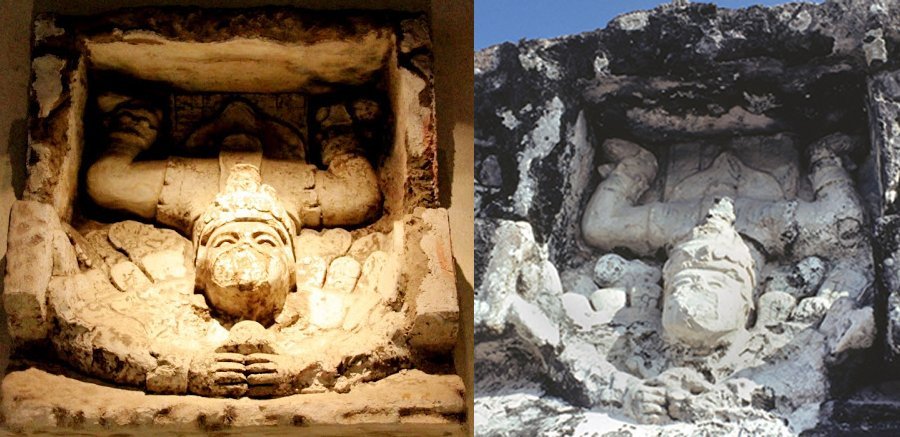Ancient Maya Ruins Of Tulum: Sea Port And Sacred Site For Worshiping Of Descending God
A. Sutherland - AncientPages.com - The ancient Maya site Tulum is the Yucatan Mayan word for ‘fence, trench or wall’ but it also has another name ‘Zama’, meaning ‘City of Dawn’, because it faces the sunrise.
Diving or Descending God is depicted with the head in front, hanging arms and legs bent upwards in a lowered position as if down from heaven. National Museum of Anthropology in Mexico City.
Ancient ruins of Tulum demonstrate the strong influence of Chichen Itza, one of the largest Maya cities referred to in later Mesoamerican literature. The fall of this massive city-state in the 13th century, only 120 kilometers away, coincides with the rise of Tulum. In many respects, Chichen Itza’s aesthetic, inspired by Toltec example, is carried on at Tulum.
Early classic stela inscribed with the date - 564 AD – it is the earliest archeological evidence of human occupation in the area. In the 13th century AD, Tulum was a flourishing trading seaport with access to both land and sea trade routes; the city had a crucial strategic location.
 The murals at Tulum also show ocean-going canoes departing and arriving to Tulum, a prominent port city.
The murals at Tulum also show ocean-going canoes departing and arriving to Tulum, a prominent port city.
Obsidian trade was developed with central Mexico, jade came from Guatemala, copper from Honduras, and from Tabasco arrived cacao beans.
These goods were later transshipped in other canoes sailing south and north.
Tulum reached its height in the 13th to 15th century and was inhabited by about 1,000 to 1,600 people.
The walled seaport with beautifully painted temples of red white and blue, was spotted by a Spanish expedition on May 7, 1518
An enclosure wall and watchtowers in the northwest and southwest corners, allowed the Tulum fort to be defended against invasions.
Tulum - likely constructed, mainly for defensive purposes - was also a sacred site with unique architectural elements, such as small-sized temples with flat roofs.
Many depictions in the Maya murals and other Mayan artwork discovered around the site, confirm that Tulum was an important center for the worship of the Diving or Descending God, a deity depicted in the Temple of the Frescoes and in the Temple of the Diving God located in the central area of Tulum.
The same god - similar to Ah Mucen Cab, a bee god, is also depicted at Tulum's most impressive structure, the so-called (The Castle), which was originally painted red and covered with stucco. El Castillo has three niches and in the central niche above the doorway, there is a sculpture of the descending god.
This god was the main deity at Tulum, the diving god is likely associated with the planet Venus, and accordingly, Quetzalcoatl, the Feathered Serpent.
The Temple of the Frescoes was used as an observatory for tracking the movements of the sun. Niched figurines of the Maya “diving god” or Venus deity decorate the facade of the temple.
Above the entrance in the western wall, a stucco figure of the “diving god” is still preserved, giving the temple its name.
The ancient Maya were skilled astronomers who watched the movements of the stars and planets. The sun and the moon were not the only celestial bodies of importance to the ancient Maya. The movements of the planet Venus had special meaning for these ancient people. Tables that mark Venus’ position throughout the year are recorded in codices, ancient Maya books, and on monuments throughout the Maya kingdoms as well.
By the end of the 16th century, the site was abandoned completely.
Written by – A. Sutherland - AncientPages.com Senior Staff Writer
Copyright © AncientPages.com All rights reserved. This material may not be published, broadcast, rewritten or redistributed in whole or part without the express written permission of AncientPages.com
Expand for referencesReferences:
J. E. Thompson, Maya History and Religion
More From Ancient Pages
-
 Enigmatic Bronze Age Fulacht Fiadh: ‘Kitchens’ Of The Legendary Irish Warriors
Civilizations | Nov 26, 2018
Enigmatic Bronze Age Fulacht Fiadh: ‘Kitchens’ Of The Legendary Irish Warriors
Civilizations | Nov 26, 2018 -
 Unusual Biblical Cloud – What Was This Perplexing Atmospheric Phenomenon?
Ancient Mysteries | Feb 22, 2019
Unusual Biblical Cloud – What Was This Perplexing Atmospheric Phenomenon?
Ancient Mysteries | Feb 22, 2019 -
 Cerne Abbas Giant: Researchers Attempt To Determine Age Of Giant Figure
Archaeology | Mar 27, 2020
Cerne Abbas Giant: Researchers Attempt To Determine Age Of Giant Figure
Archaeology | Mar 27, 2020 -
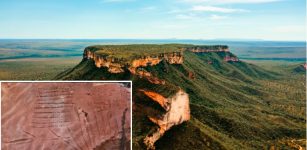 2,000-Year-Old Rock Art Sites Discovered In Jalapão, Brazil
Archaeology | Mar 11, 2024
2,000-Year-Old Rock Art Sites Discovered In Jalapão, Brazil
Archaeology | Mar 11, 2024 -
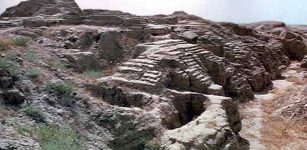 Ashur – First Capital And Powerful Religious Center Of The Assyrian Empire
Featured Stories | Jun 28, 2019
Ashur – First Capital And Powerful Religious Center Of The Assyrian Empire
Featured Stories | Jun 28, 2019 -
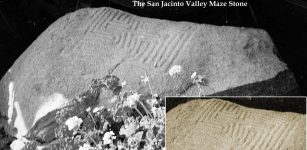 Baffling Prehistoric Maze Stones In Hemet And San Jacinta Valley, California
Ancient Symbols | Jun 24, 2016
Baffling Prehistoric Maze Stones In Hemet And San Jacinta Valley, California
Ancient Symbols | Jun 24, 2016 -
 More Than 27,000 Artifacts Illegally Collected By ‘Expert In Archaeology’ – Seized In France
Artifacts | Dec 18, 2020
More Than 27,000 Artifacts Illegally Collected By ‘Expert In Archaeology’ – Seized In France
Artifacts | Dec 18, 2020 -
 Mysterious Black Cloud Caused A Global Catastrophe In 536 A.D. And 18 Months Of Darkness
Featured Stories | May 25, 2021
Mysterious Black Cloud Caused A Global Catastrophe In 536 A.D. And 18 Months Of Darkness
Featured Stories | May 25, 2021 -
 Two-Million-Year-Old DNA Opens A ‘Game-Changing’ New Chapter In The History Of Evolution
Archaeology | Dec 7, 2022
Two-Million-Year-Old DNA Opens A ‘Game-Changing’ New Chapter In The History Of Evolution
Archaeology | Dec 7, 2022 -
 Unsolved Mystery Of Gedi Ruins Protected By The ‘Old Ones’ – Why Did People Leave?
Civilizations | Apr 2, 2019
Unsolved Mystery Of Gedi Ruins Protected By The ‘Old Ones’ – Why Did People Leave?
Civilizations | Apr 2, 2019 -
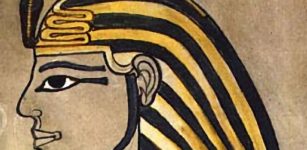 Uraeus – Sacred Emblem That Symbolized Sovereignty, Royalty, Deity And Divine Authority In The Land Of Pharaohs
Featured Stories | May 30, 2022
Uraeus – Sacred Emblem That Symbolized Sovereignty, Royalty, Deity And Divine Authority In The Land Of Pharaohs
Featured Stories | May 30, 2022 -
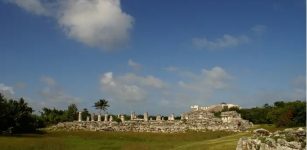 Immigrants In Prehispanic Cancun Were Treated Just Like Maya Locals
Archaeology | Oct 26, 2023
Immigrants In Prehispanic Cancun Were Treated Just Like Maya Locals
Archaeology | Oct 26, 2023 -
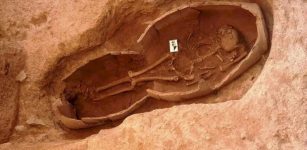 Parthian Jar Burial Dated To 247 BC – 224 CE Unearthed In Iran’s Kurdistan Province
Archaeology | Sep 29, 2020
Parthian Jar Burial Dated To 247 BC – 224 CE Unearthed In Iran’s Kurdistan Province
Archaeology | Sep 29, 2020 -
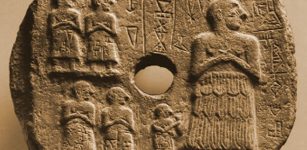 Sumerian Plaque Dedicated To King Ur-Nanshe, The Founder Of The 1st Dynasty Of Lagash
Artifacts | Dec 5, 2018
Sumerian Plaque Dedicated To King Ur-Nanshe, The Founder Of The 1st Dynasty Of Lagash
Artifacts | Dec 5, 2018 -
 Bulgaria’s Aquae Calidae Spa Complex: More 40 Coins Dated To 4th Century CE – Found
Archaeology | Jul 24, 2020
Bulgaria’s Aquae Calidae Spa Complex: More 40 Coins Dated To 4th Century CE – Found
Archaeology | Jul 24, 2020 -
 Mystery Of Pre-Adamic Didanum Race: Giants Who Were Ancestors Of The Nephilim and Rephaim
Biblical Mysteries | Oct 2, 2014
Mystery Of Pre-Adamic Didanum Race: Giants Who Were Ancestors Of The Nephilim and Rephaim
Biblical Mysteries | Oct 2, 2014 -
 Mysterious Bones May Re-Write History Of North America – Humans Were Present On The Continent 10 Times Earlier
Archaeology | May 8, 2017
Mysterious Bones May Re-Write History Of North America – Humans Were Present On The Continent 10 Times Earlier
Archaeology | May 8, 2017 -
 Deception And Hidden Truth – Ancient Struggle Of The Eagle And Serpent – Part 2
Ancient Mysteries | Sep 6, 2019
Deception And Hidden Truth – Ancient Struggle Of The Eagle And Serpent – Part 2
Ancient Mysteries | Sep 6, 2019 -
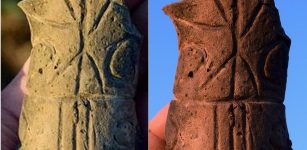 7,000-Year-Old Unique Lipnik Idol Statuette Unearthed In Moravian Gate Valley, Czech Republic
Archaeology | Dec 14, 2015
7,000-Year-Old Unique Lipnik Idol Statuette Unearthed In Moravian Gate Valley, Czech Republic
Archaeology | Dec 14, 2015 -
 “Hittite Forest” That Grew 4,500 Years Ago Will Be Created In Alacahöyük, Turkey
Archaeology | Dec 21, 2015
“Hittite Forest” That Grew 4,500 Years Ago Will Be Created In Alacahöyük, Turkey
Archaeology | Dec 21, 2015

